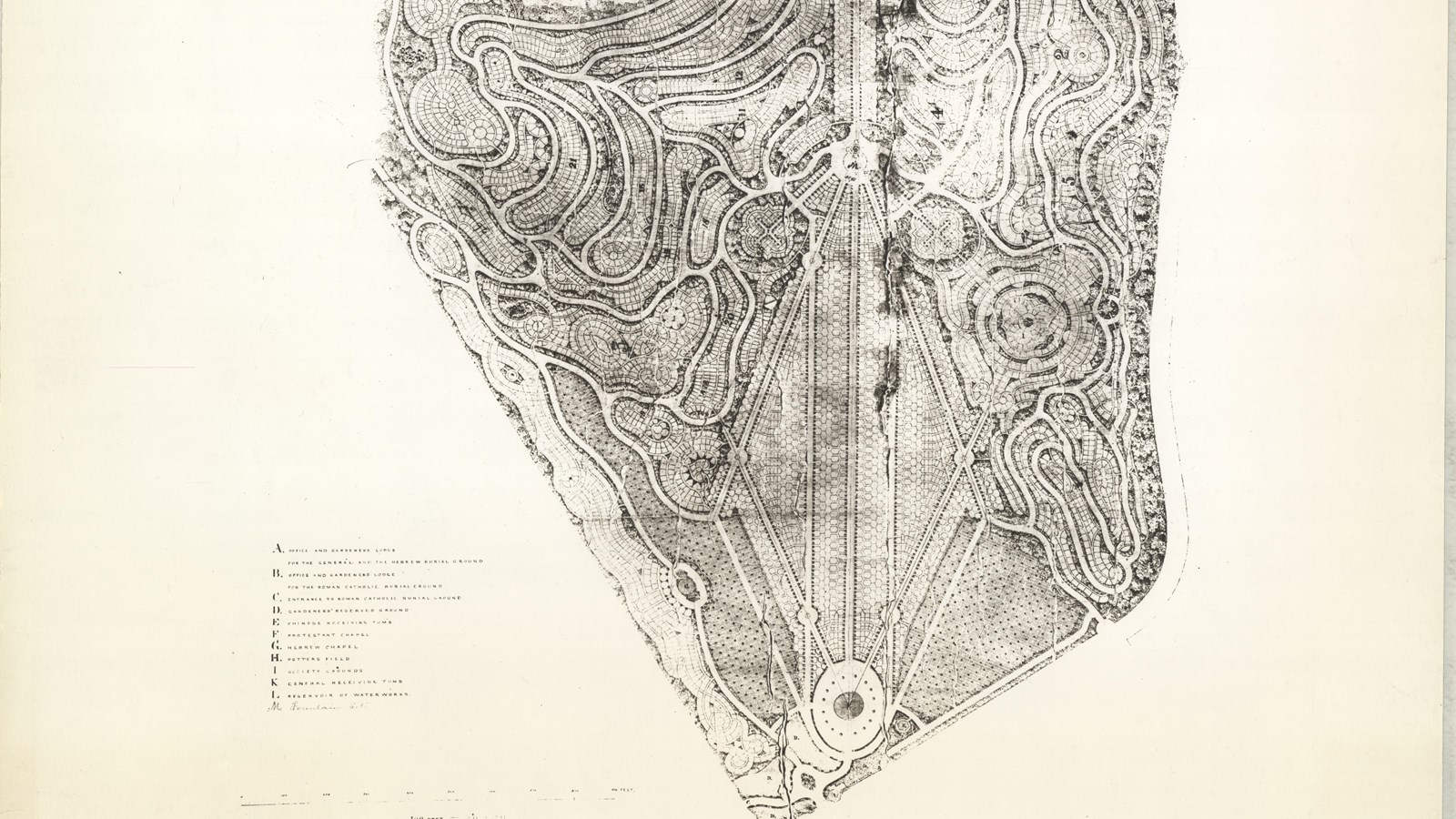Last updated: June 12, 2024
Place
The Mountain View Cemetery

Olmsted Archives
Quick Facts
Location:
Oakland, CA
Significance:
Olmsted Designed Cemetery
In 1863, Oaklands most prominent citizens joined together to establish a cemetery just north of the city. They asked Frederick Law Olmsted to begin his first work in California and design the 209-acre hillside property.
Olmsted created his initial plan in 1864, though he would refine it over the next two years. He carefully selected drought-resistant plants that would line curving uphill paths, allowing for expansive views of the Bay Area, while also screening the cemetery from heavy winds.
For his design, Olmsted drew on the philosophy of American Transcendentalism, which was popular at the time. As open space began disappearing in cities, people began flocking to cemeteries, which they saw as a replacement for the forests and fields taken up for development. Mountain View Cemetery stands out from the other cemeteries of its time because of Olmsted’s vision to look at man and nature and their relationship to one another.
To compliment his winding paths, Olmsted brought in trees simple in form and color, though distinctive in shape, which helped create a setting of beauty and peace. He designed Mountain View Cemetery to serve as an example of a civilized life, where one both lives and dies in harmony with the environment.
As families began buying up plots in the cemetery, it appeared the resting place would serve the affluent of the Bay Area, with many monuments being erected on the grounds. When Olmsted began work on Mountain View Cemetery, the land was 209-acres. Since then, it has expanded to over 226 acres, though with every new addition, there is sensitive treatment to Olmsted’s original design.
Source: "Mountain View Cemetery," The Cultural Landscape Foundation
For more information and primary resources, please visit:
Olmsted Research Guide Online
Olmsted Archives on Flickr
Olmsted Online
Olmsted created his initial plan in 1864, though he would refine it over the next two years. He carefully selected drought-resistant plants that would line curving uphill paths, allowing for expansive views of the Bay Area, while also screening the cemetery from heavy winds.
For his design, Olmsted drew on the philosophy of American Transcendentalism, which was popular at the time. As open space began disappearing in cities, people began flocking to cemeteries, which they saw as a replacement for the forests and fields taken up for development. Mountain View Cemetery stands out from the other cemeteries of its time because of Olmsted’s vision to look at man and nature and their relationship to one another.
To compliment his winding paths, Olmsted brought in trees simple in form and color, though distinctive in shape, which helped create a setting of beauty and peace. He designed Mountain View Cemetery to serve as an example of a civilized life, where one both lives and dies in harmony with the environment.
As families began buying up plots in the cemetery, it appeared the resting place would serve the affluent of the Bay Area, with many monuments being erected on the grounds. When Olmsted began work on Mountain View Cemetery, the land was 209-acres. Since then, it has expanded to over 226 acres, though with every new addition, there is sensitive treatment to Olmsted’s original design.
Source: "Mountain View Cemetery," The Cultural Landscape Foundation
For more information and primary resources, please visit:
Olmsted Research Guide Online
Olmsted Archives on Flickr
Olmsted Online
